DIY Escape Room Puzzles
- Ivan and Andreas
- August 8, 2023
- 32 Comments
In my previous article, I shared my exhilarating journey of how I made my first DIY escape room. As a Game Master, I was over the moon, and my friends had an absolute blast! Today, I’ll let you in on the secret behind my DIY escape room’s success and the types of puzzles I crafted for the ultimate adventure.
Now, we often size up escape rooms based on the complexity of their puzzles. If they’re too easy-peasy, nobody feels a sense of accomplishment. The true satisfaction lies in conquering challenges. On the flip side, if puzzles are too tough, people will struggle to solve them. Nobody enjoys failing, and overly tricky puzzles will lead to just that.
So, what’s the trick? I’m not spilling any groundbreaking secrets when I say it’s all about striking the right balance. But how do you find that sweet spot between a satisfying sense of achievement and a challenge that’s actually attainable? Feast your eyes on my list of puzzles, and feel free to borrow them for a fabulous DIY escape room party of your own 😉
1. Paper on Paper
This enigmatic little game is designed to reveal a hidden message, guiding your escape room adventurers toward their next clue. The magic unfolds as follows:
First, you’ll need two sheets of paper – one with an intriguing, seemingly unrelated text (in our example, it’s Italian) and another blank sheet that’ll act as a secret decoder.
On the blank sheet, you’ll carefully create cutouts, strategically positioned so that when you place it over the first sheet, each hole uncovers just one letter from the text beneath. These letters, when connected, will unveil a covert hint that’ll set your guests on the path to solving the puzzle.
In our case, the concealed message was “check the hydrant,” where a slyly hidden piece of paper awaited discovery.
This puzzle works by using misdirection and a touch of mystery to engage your players. They’ll have a blast piecing together the concealed message, feeling like master detectives in their very own escape room caper!
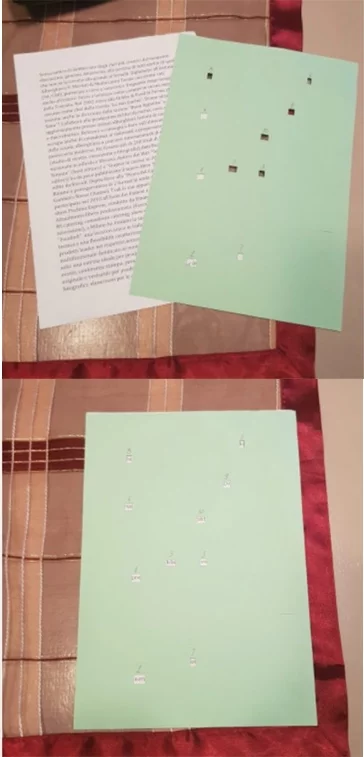
2. Invisible Text
This is one of those “wow effect” puzzles. Actually, you have to prepare this one at least one hour before the game starts. The trick is that there is an invisible text on the paper, which appears only when it is put underwater. Coooool, right?
You don’t have to use chemicals or invisible inks, there is an easy way to do this.
You’ll need: 2 sheets of paper, 1 pencil, water in a tray, and a smooth surface (a mirror will do the job).
- Soak one of the papers in water to make it wet and place it over the mirror.
- Take the dry paper and place it on the wet sheet of paper.
- Write your message on the dry sheet using a pencil.
- Throw away the paper in which you have written the message.
You can see that the message written on the dry sheet of paper also makes a slight imprint on the wet sheet of paper.
Allow it to dry completely. When it becomes completely dry, the imprint becomes invisible.
When the players put the paper underwater, the message appears again, and that is the moment when they realize that you are an awesome game master.
3. GPS Coordinates
This puzzle is one of my favorites because it triggers thinking outside the box. In my case, it was a hidden piece of paper with a big number written on it. At least 1 out of 5 people for sure will recognize that the number is actually GPS coordinates. Because they were allowed to use everything in the room, it was time for them to put their smartphones into action. Using any GPS app, they can easily get to the destination.
Ok, so how is it possible to get out of the room in the middle of an escape room game?? That is a logical question, but as I said before, thinking outside the box brings lots more fun and unexpected puzzles. As soon as I changed the goal from escaping the room to finding the hidden treasure, a new world of possibilities opened. That means that the players are not necessarily locked in the room and that’s why the GPS puzzle is a very good option.
The location was across from my apartment, next to the high school entrance. When they got there, they found an envelope with another clue in it. Because the GPS satellites have a +-5 m error, you should find some object in that radius that cannot be missed and you should put the envelope next to it. In my game, it was an electrical junction box and I put an electricity symbol next to the coordinate number as a hint. I even burned the sides of the paper so it looks kind of struck by lightning.
Trust me, the players will love this addition of a treasure hunt to your escape room.
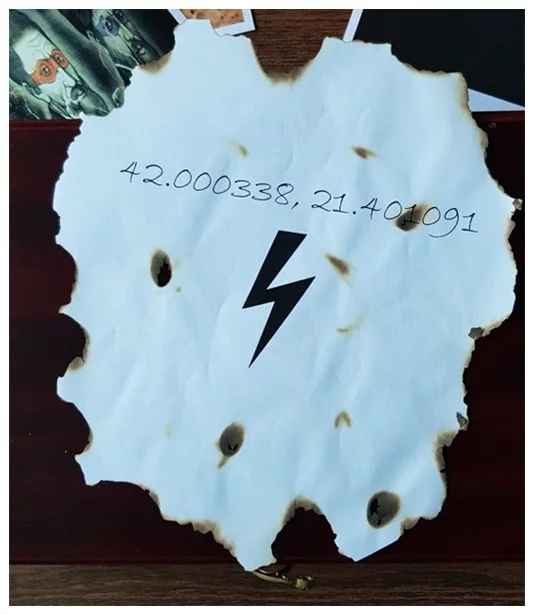

4. Map of the apartment
This puzzle will take you on a thrilling treasure hunt through the very apartment you think you know so well. Prepare to be amazed!
To begin, sketch a simple map of your apartment, detailing the rooms and their layout. Next, select a specific location and mark it with an “X” – because who doesn’t love a good treasure map? At that exact spot, cunningly conceal another clue for your eager participants.
Pro tip: Make sure this hidden gem is devilishly difficult to find. You don’t want any sneaky adventurers stumbling upon it before they’ve even laid eyes on the map! Keep them on their toes and let the map guide their way.
In my version of this puzzle, I hid a cell phone within the depths of the couch, unbeknownst to my unsuspecting friends. Little did they know that this ordinary-looking phone would become a key instrument in tackling their next challenge.
As your guests scramble to decipher the map, you can sit back and watch the action unfold. They’ll soon realize that even the most familiar spaces can hide secrets just waiting to be discovered. Armed with their trusty map, they’ll navigate the apartment like modern-day Indiana Joneses, eager to uncover the next piece of the puzzle. And when they finally locate the elusive clue, they’ll be one step closer to cracking the ultimate escape room enigma!

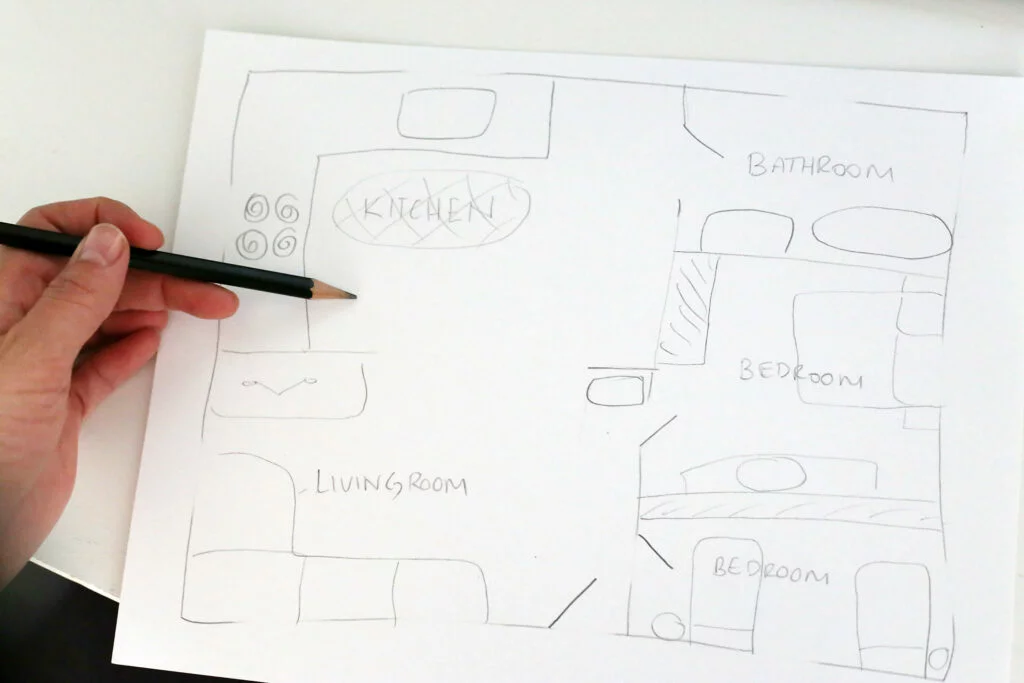
5. UV Lights
UV lights are among the most used puzzles in escape rooms. You don’t need a special kind of light or expensive markers to create this puzzle. You can do it with an everyday fluorescent yellow marker and a regular battery lamp.
First, Make the invisible ink
Some people are making a real mess trying to achieve this trick. They are opening the markers with pliers, washing them in hot water, boiling them in a microwave, washing them again… oooooh is such a nightmare and a real fluorescent mess all around your kitchen. Many times these preparations end with failure and frustration. That’s why I like to make things simpler in order to make them better. Using the following method you can achieve the same effect without doing all of the things I mentioned before.
Take an illustration/picture with dark color background and write your message/clue on it, using the yellow fluorescent marker. Then hang it on any wall where the luminance is a bit lower. This way everything is visible except the hidden message, which appears under the black light only.
Trust me, this way the message appears better and it takes less time to prepare the puzzle.
Tip: Here’s a sneaky little secret – instead of opting for a plain, dark illustration or picture, choose one that’s related to your escape room theme (just like I did with the Leaning Tower of Pisa). This clever twist ensures that even if the room is bathed in light, the image will act as a delightful distraction, camouflaging your hidden message like a master of disguise.
Now, don’t let my Pisa backdrop fool you! While it might not be the darkest of backgrounds, I had no trouble scribbling my secret code. The key was placing the picture in a part of the apartment where the light was dim and mysterious, making the covert message all the more elusive.
Now Let’s make the black light:
You can use a regular battery lamp or even a smartphone flashlight.
Just grab a piece of clear tape and stick it right on top of the flashlight/battery lamp. Then take a blue color highlighter and color it. Take another piece of tape, place it on top of the first tape, and color it with the blue highlighter. Repeat this 5 times and you have a homemade black light.
6. Face recognition app
Welcome to the high-tech world of face recognition puzzles, my friend! This one is a real doozy, but don’t worry, I’ll walk you through it step by step.
First, the puzzle master (that’s you!) will print out a bunch of pictures related to Italy and place them around the room. One of these pictures is going to be a portrait of none other than the legendary Leonardo Da Vinci himself. But wait, it gets better!

The players will find a cell phone hidden in the couch. Sneaky, huh? But this isn’t just any ordinary phone. Oh no, this one has a special app on it. It’s a face recognition app, specifically designed for unlocking other mobile apps. That’s right, we’re going full Mission Impossible on this puzzle!
So, the players will need to use the face recognition app to scan Da Vinci’s face from the portrait hanging on the wall. Once they do that, a 4 digit code will magically appear on the phone’s screen. That code can then be used to unlock a box, a door, or whatever other devious contraption you’ve cooked up for them.
To get the face recognition app to recognize a picture of a face (in this case, Da Vinci’s face), you’d need to use an app like Applock with face/voice recognition features. When setting up the app, you’ll have to use the picture of Da Vinci as the reference face for the app to recognize. This means you’ll have to “train” the app by scanning the picture a few times to ensure it can identify that specific face.
Once the setup is complete, players can use the app to scan Da Vinci’s face during the game, and a 4-digit code will appear when the face is successfully recognized. It’s important to note that the quality of face recognition may vary depending on the app you’re using and the phone’s capabilities. You might need to experiment with different apps or adjust the picture’s size and lighting conditions to ensure the face recognition works smoothly during the game.
And there you have it, folks! A high-tech, Da Vinci-inspired puzzle that will have your players feeling like master spies. Just make sure they don’t accidentally unlock your Twitter account while they’re at it.
7. Morse code
Cracking Morse code makes you feel like Alan Turing decoding the Enigma machine during WW2. By using Morse code, you can turn light, voice, and sound signals into text information.
For example: Install a Morse code app on your smartphone. In the app, write the combination that opens your lock. Remove the bulb from your ceiling light and place the phone there.
Make sure your phone has enough battery to transmit flashlight Morse code for at least an hour. At one point in the game, players find a Morse alphabet. Ahaaaaa, the light isn’t broken after all, it is a coded message.
So when they crack the code, they open the lock that leads them to the next challenge. This puzzle isn’t an easy one, but when they finally solve it, it gives the players a lot of self-esteem and a feeling of accomplishment.
8. Tiny Tiny Tiny tiny text
This will make them squint like Clint until they find the magnifying glass you should put in some of the locked boxes. Write your clue in Times new roman (font size 2) on a regular sheet of paper, but make sure it is printed on a good-quality laser printer. Let’s see who needs a new pair of glasses.

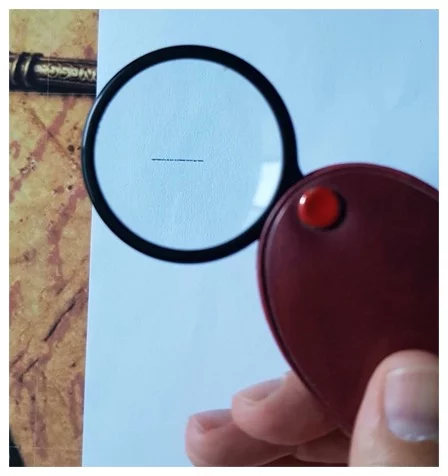
9. Custom questions
This is a good way to wrap up your escape room game. Because you’re going to set up this game for your loved ones, friends or family, I suppose that you already know each of them very well. You are familiar with what they love, their favorite song, food, artist, and so on. You probably have some inside jokes only the two of you are in on.
For example: One of my friends loves astronomy and knows a lot of things about the Universe, our solar system, and so on. So I wrote down a question that he certainly knows the answer to (e.g.How many planets are in our solar system?)
Another friend of mine is a big NBA fan, so my question for him was: How many NBA titles has Michael Jordan won?
When they do the math, they get the combination (in this case 1990) for the last lock that opens the “treasure” box.
This puzzle makes them work together more than any other puzzle.
All of these questions must require a numeric answer.

10. Interactive games and tasks
Not all of the challenges have to be logical puzzles. Of course, when you think of an escape room, the first thing that comes to mind are brainy challenges and “aha!” puzzles. But in order to keep the flow of the game, you have to include some challenges that don’t require actual thinking, rather they merely imply executing some tasks.
For example: Finding a hidden key in the room isn’t something you have to solve, you just have to inspect every corner in that room and there it is.
Having to connect dots to make hints appear is also a good example. Anyone can do it just by following the given directions for connecting the dots.
These tasks set the pace of the game, and it’s a great way to give the players a feeling of accomplishment. Their self-esteem rises as they solve this challenge, so they become more enthusiastic to finish the whole game.
Sometimes players can struggle when solving logical puzzles, and if you set up only logical challenges it may even become tedious. Maybe at first they will love to show how smart they really are, but eventually, they may get tired of logical analysis. That’s why you should mix things up with this kind of tasks, which will keep the excitement throughout the whole game.
You can even throw in an interactive game in order to solve some of the challenges.
For example: Put one of the clues out of reach, but still visible. One option is to put a clue (padlock code) in a different room and lock the door with a padlock and chain. This way the door can be ajar just enough for the clue to be visible, but not enough for players to enter the room.
Now, in front of the clue, place a piece of paper with an illustration of a target, covering the padlock code. They need to shoot the target with a bunch of rubber bands. When you hear a ”Yaaaaaay!”, you know that someone hit the target and under it the padlock code was revealed.
11. Cipher Wheel
You can make a simple cipher wheel by attaching two round paper templates in the center with a metal braid. When the two disks are rotated correctly to each other, they can decode a secret message by translating letters from the outer disk to the corresponding ones on the inner disk.
Cipher wheels have been widely used in the real world for encoding secret messages and therefore they will fit perfectly into a theme involving secret societies, espionage, or the military. Players might not have the patience to decode a large volume of text, so we recommend sticking to a single word or a few words and just disregarding spaces between words, e.g., “lookoutthewindow”. Numbers can be encoded as well using letters by spelling them out, e.g., “onefivetwo”.
As usual, when designing puzzles, start with deciding on the solution. Now select a key that defines the correct rotation of the two disks, e.g. “A = s”. Now set the wheel in the correct position and encode your solution, letter by letter, from the inner disk to the outer disk.
For the most basic puzzle, just write down the coded message and the key on different pieces of paper and hide them as well as the cipher wheel itself. Leave it up to the players to find them and figure out that they are related.
Note that the letters on the outer disk are uppercase, whereas the letters in the inner disk are lower case. This is intentional and helps the player know which direction to do the translation in. If you use the same font on both the wheel and the clues this helps the player to know that they are related.
12. Arranging paper strips
This is perhaps the simplest example of a whole class of puzzles about arranging things in the right way. We included it because it is super easy to prepare and it works great for group solving.
If you have a secret clue like the encoded word or the key from the cipher wheel puzzle above, simply write this information using a big font on a piece of A4 paper and cut it into strips about one inch wide with a pair of scissors and hide them around the room. Make sure that the cuts cross the letters so the players can assemble them back in the right order. In this case, the players use the shape of the solution itself for completing the puzzle.
Unlike many puzzles, this one can be used to convey not only tidbits of information, but anything that can fit on the paper. Consider using it to conceal that secret internal company memo about the illegal chemical spill that the company is trying desperately to cover up. Such information would be maculated, but who would anticipate your players putting it back into place?
As an alternative, write the secret information or solution such that there is only one letter on each strip. This way the solution cannot be used to determine the order. So instead put an image on the paper that will be used for arranging them in the right order.
Whether this puzzle works depends on how the cuts are made, so make sure to test this one yourself before exposing your group to it!

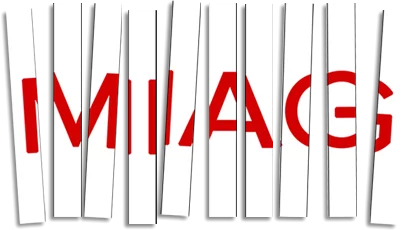
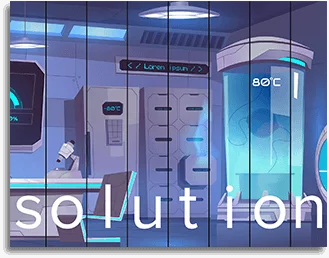
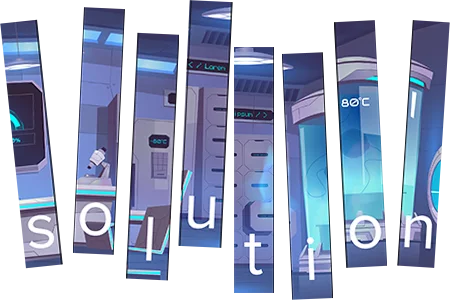
13. Measuring Tape
Putting regular household items into creative use has always been a staple in DIY escape rooms. These items can often go unnoticed until the players realize they are part of the game.
To design a simple puzzle using a measuring tape, decide on a 3-digit code and measure out each digit as the length of a piece of yarn. Use a different color for each digit. Now, since the players will not know to connect the yarn with the measuring tape you need to provide some cluing, and we will take you through the design process step by step:
First, assuming that we would leave the lengths of yarn scattered around in the room, we would need to give a clue as to which order they should be used. This can be done by putting three dots of the right colors on a piece of paper and putting an arrow to show the direction.
Second, leaving just the clue and the length of yarn in the room will not necessarily be enough for players to know that the yarn should be measured. To ensure that the players will get this, put an image of a measuring tape in three different colors, instead of just dots.
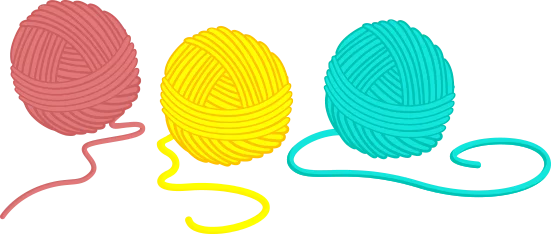

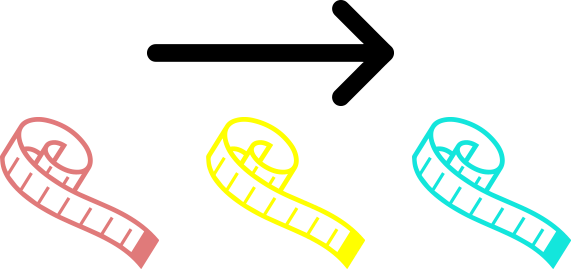
Our ready-to-play game kits
14. Periodic Table
Decoding puzzles are very common in escape rooms, but the classic codes that are commonly known have a drawback. Some players might already know how they work and will instantly recognize them and create an unleveled playing field. This is why it can be a good idea, and a lot of fun, to come up with your own odes.
In this example, we will make the substitution cipher into our own. A substitution cipher is simply a code where a look-up table is used to decode a secret message. The periodic table can be used as such a look-up table to create a great puzzle.
First, you need to pick an answer word or solution that can be formed by the element symbols. Each element in the table has a one- or two-letter symbol and putting these together can form surprisingly many words, e.g., NoTiFICaTiON (see this comprehensive list).
Second, write out the element number for each symbol as a sequence, e.g. 102 81 9 53 2081 8 7 on a piece of paper. Don’t forget the spaces in this one, they are important.
Third, to make sure that the players connect the sequence of numbers to the periodic table, you need a clue. For a very gentle nudge, you could color code the numbers to the colors of the background of the elements on the table. For a stronger push, you could show each number in the upper right corner of a square like they are shown in the table.

15. Labyrinths
Classic puzzles like sudokus and crosswords should be used with care in an escape room. Much of the fun of an escape room is about learning the rules of the puzzles. The rules for classic puzzles are already known so in this case solving them can become a chore. However, as long as you choose a puzzle that doesn’t take too long, there is still the interesting challenge of extracting a solution from it.
The easiest way to use a labyrinth in an escape room is to solve the labyrinth yourself first. Then, on a fresh copy of the labyrinth, write the letters of the answer along the correct path. Finally, fill in random letters in other places so the correct letters are not giving away the path. The players will now need to solve the labyrinth and write down the letters along the path they take.
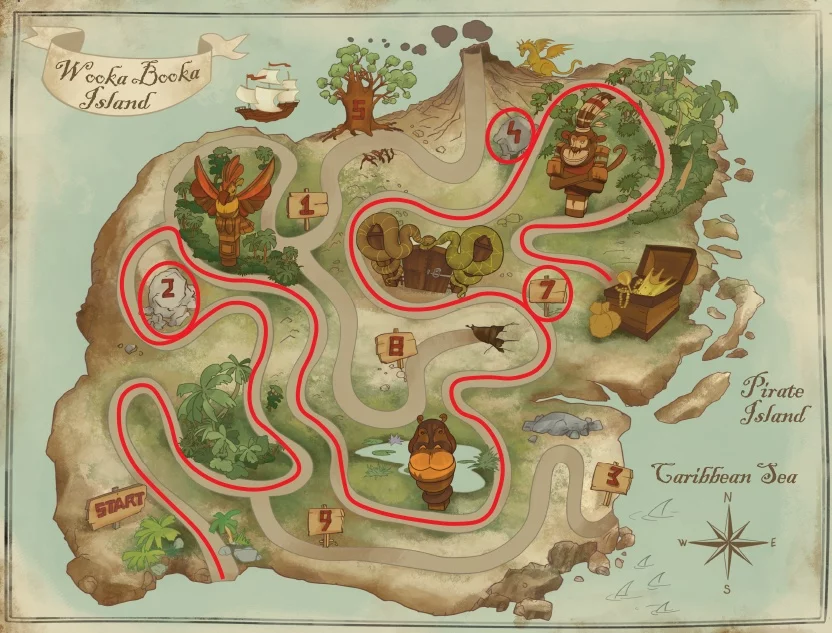
16. Pattern Matching
Common to many escape room puzzles is that the player must make an intuitive connection between the clues to even begin the puzzle. Often this connection is formed because two clues share some property such as color, shape, size, or pattern. In this example, we will show how to make a puzzle that is only solvable by identifying the same pattern in two places.
For this puzzle, we will assume that the solution is a word. First, write the letters of the solution in a pattern and then extend the pattern to include some symbols that are not part of the solution. In our example, we used the solution ROSE and arranged them randomly in a grid pattern with a distinctive shape. This is the first clue.
The second clue contains the same grid pattern but with circles instead of letters. Each of the circles that correspond to a letter in the solution is marked with the number of that letter in the solution word, enabling the player to put the letters in the right order.
To integrate this puzzle into an escape room, how about leaving the first clue in plain sight, but locking the other one behind another puzzle, i.e., in a padlocked box?

17. Extract a secret message from a letter
Starting an escape room with a simple letter that explains the situation to the players is a great way to set the stage and deliver the narrative of your game. It also happens to be the perfect place to encode your first clue. Hiding information in plain sight is a practice known as “steganography”, but without further dwelling on fancy words, here is how to do it yourself:
It’s best to first have written the letter that you need in the game anyway. Then, you need to figure out the secret message that you want to hide in it, in this example let’s take the word “UNDERTHEHAT” which could be a clue to the location of an object. Now, edit your letter by going from the beginning and marking each of the letters in the secret message as you come across them, like this:
You will laUgh (and you are quite welcome) wheN I tell you that your olD acquaintancE is tuRned sporTsman, and Has takEn tHree noble boArs. “WhaT!” you exclaim, “Pliny!”—Even he.
Rather than capitalizing relevant letters, you could also omit the letters completely, write wrong letters instead, write them in a different color, or mark them in some other wáy.
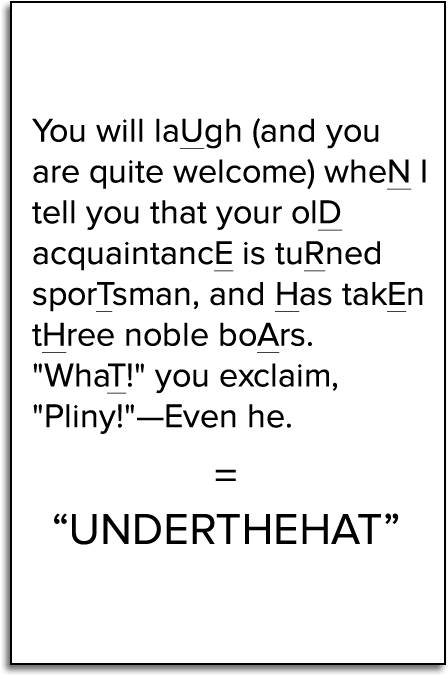
18. Hide it in the matchbox
Searching for clues hidden around the room is a great group activity that players will love. However, sometimes you want to lock away certain clues to tie some of the puzzles together in a sequence or to avoid exposing the player to too many clues from the beginning.
Using padlocked boxes has been the common way of doing this, but there are easier and cheaper ways. If you hide something well enough it will not be found by a normal room search. Later in the game players will reveal a clue which will make them search again, this time finding the object. Trust me, your players will love the feeling of “oh my god, it was here the whole time”.
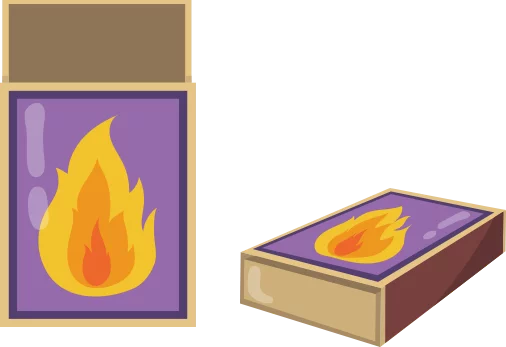
This is even easier to do at home since household items can make for great hiding places. A matchbox is particularly great because it can be used in different ways:
- You can encode information in the matches themselves
- You can write a clue on the bottom below the matches
- You can put an item inside it
- You can write a clue on the inside of the cover box
Drawing attention to the matchbox can be done with a direct clue that can easily be the solution of another puzzle, like “MATCHBOX”.
19. Crossword clues
Full crossword puzzles can be very time-consuming for the players but using just the way clues are constructed you can disguise your clues. For example, instead of giving the clue “MATCHBOX” directly, you could give a crossword clue to it, such as “SMALL FIERY CONTAINER”. You can use online crossword solvers by entering the solution, “MATCHBOX”, as the known letters.
If your players are particularly language savvy you could consider turning up the difficulty by using cryptic crossword clues instead. Cryptic crossword clues have many forms, but the simplest one is to hide a word inside the clue itself, like this:
FIERY LOGS HIDE IN HAZMAT CHEST
The words “hide in” hint that there is a (plural) word hidden in the following letters. Players will realize that disregarding the space the word “MATCHES” is hidden which fits the definition “FIERY LOGS”. To create this puzzle, I just decided to split the word into MAT and CHES and then googled for words ending with MAT and starting with CHES to find a suitable pair. Note that creating good cryptic crossword clues is not easy and a puzzle in itself.
Both of these clue types require some vocabulary knowledge, so gauge your audience carefully before using them.
20. Telephone spelling alphabets
Back in the days, long before today’s advanced communication systems, the military struggled with low-quality and long-distance telephones. In particular discriminating words that sound similar when pronounced was an issue. For this reason, telephone spelling alphabets were developed, of which the NATO Phonetic Alphabet might be the one most people know.
It consists of 26 code words: Alfa, Bravo, Charlie, Delta, Echo, Foxtrot, Golf, Hotel, India, Juliett, Kilo, Lima, Mike, November, Oscar, Papa, Quebec, Romeo, Sierra, Tango, Uniform, Victor, Whiskey, X-ray, Yankee, Zulu.
How about recording a clue or secret code on an old tape recorder and letting the players find the tape and the player themselves? Or even easier, change your answering machine on your cell phone to contain this message and leave the players with your phone number as a clue?
21. Research
I use the term research for puzzles that require players to piece together conclusions based on documents or evidence. This is the type of puzzle that you would typically find in a murder mystery game, but it can also be used in regular escape rooms. Research puzzles fit particularly well when the game has a narrative that supports it as we will see.
In this example, we will start with the solution. The narrative of the game is to identify the name of the person who launched a cyber-attack on your country. The players have been called to the hotel room where he is found together with his passport, but unwilling to speak. This is already a research task since the players will need to compare the face to the passport photo to establish their name.
Now, we will improve it to fit better to a game for home.
First, let’s get rid of the body. Imagine he managed to flee the scene, but luckily, we have security camera footage from the hallway that accurately shows the face of the person entering the room. The footage can be represented as a single photo.
Second, producing a full passport might be a bit too time-consuming, but the receptionist would have taken a photocopy of the page showing his identity. What she has given the players is such a photocopy for all residents, maybe six persons in total.
Players will certainly feel like a real detective when they find the security camera photo and compare the image to the stack of papers to look up the name.
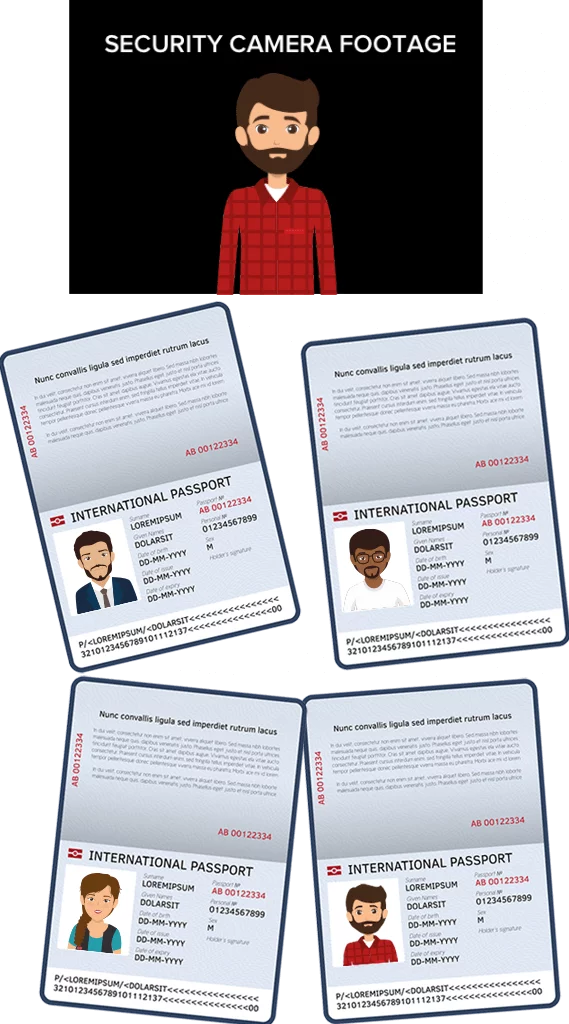
22. Logic puzzle
We saved one of the best for last. Logic puzzles can fit in in most games and we used it ourselves in “The Gilded Carcanet” which you should. The example we will show in this article is not taken from the game, so no spoilers are incoming.
You probably already know the kind of logic puzzle where you are given three kids, Susan, John, and Lily, and three desserts, apple pie, brownie, and ice cream. You have to deduce which desert is the favorite of each kid. You also get two clues: John doesn’t like cake at all and Susan’s favorite has chocolate in it. John’s favorite would have to be ice cream, Susan’s favorite must be brownie and that leaves only apple pie as Lily’s favorite.
Let’s design an escape room puzzle based on this idea. Maybe you know from another clue that the four-digit secret code to the geography professor’s safe is the year he visited the Taj Mahal. In his office, your players would find a world map on the wall with pins in the locations of the seven wonders that he all visited. On the floor, in front of the map, seven cards are found with the years he visited a location, 1967, 1971, 1974, 1976, 1982, 1989, and 1992. The players must pair the years to the locations to solve the puzzle. The clues that you could include in the professor’s notebook could be along the following lines:
- I didn’t go to America before 1982
- I went to Asia only in even years
- I went to China right after Jordan
From just these clues it can be determined that the professor went to the Taj Mahal in India in 1976, even though it will not be possible to determine the years he visited the three American destinations.
If you’re concerned that the players will just brute force the 7 possible solutions, this can be fixed by deciding that the code is the last digit in the years he visited “Italy – Jordan – China – India”. This increases the possible combinations to 360.
This is also an example of a puzzle that reflects the reality of the game universe. Not only does it make sense that a geography professor would have traveled the world, but the existence of the puzzle itself makes sense because the cards with the years have simply fallen down from the map and players have to restore it.

23. Laser Maze
Create a laser maze using lasers and mirrors, which players must navigate through to reach a goal.
A laser maze involves setting up a series of lasers that players must navigate through in order to reach a goal or obtain a clue. This puzzle can add excitement and challenge to your escape room, and requires players to use strategy and problem-solving skills to succeed.
To create a laser maze, you will need to set up lasers and mirrors in a room or hallway to create a maze-like path. Players must navigate through the maze without touching any of the lasers, which will trigger an “alarm” and reset the game. The maze can be made more challenging by adding obstacles or requiring players to reach certain points in the maze to progress.
You can also add additional challenges to the laser maze by requiring players to retrieve objects or solve puzzles while navigating the maze. For example, you could set up a puzzle at the end of the maze that requires players to use clues found throughout the room to unlock a door or reveal a code.
Overall, a laser maze can be a fun and exciting puzzle to include in your DIY escape room, but it does require careful planning and setup to ensure that it is safe and challenging for players.
Extra tip: This puzzle can also be set-up with thread instead of lasers.
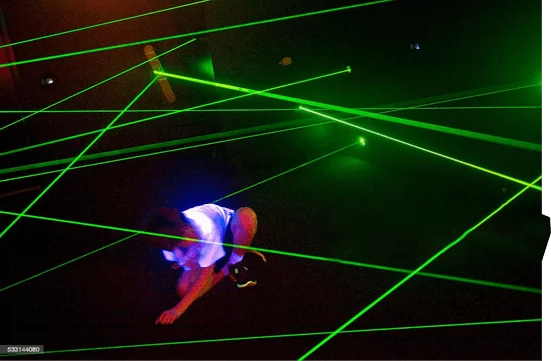
24. Word Search
Using a word search puzzle is a popular way to add a puzzle to your DIY escape room game. It involves creating a grid of letters and hiding words within the grid that relate to the theme of the game.
To create a word search puzzle, you will need to come up with a list of words that relate to the theme of your escape room. For example, if your escape room is based on a pirate theme, your list of words might include “treasure,” “ship,” “map,” “compass,” “anchor,” and so on.
Once you have your list of words, you can create a grid of letters and hide the words within the grid. The words can be hidden vertically, horizontally, diagonally, or even backwards, and players must find all of the words in order to solve the puzzle.
To make the puzzle more challenging, you can use smaller fonts or create a larger grid with more letters, which will make it harder to spot the hidden words. You can also use overlapping words or create a theme-related image within the word search grid.
Overall, using a word search puzzle can be a fun and engaging way to add a puzzle to your DIY escape room game. It requires players to use their observation and pattern recognition skills to solve the puzzle, and can be easily customized to fit the theme of your game.
25. Audio Puzzle
An audio puzzle is a type of puzzle that uses sound to convey information or clues that players must use to solve the puzzle.
Audio puzzles can be a fun and unique way to engage players and add variety to your DIY escape room.
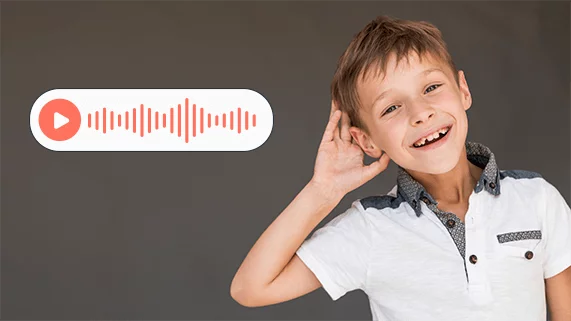
Here’s an example of how you can create an audio puzzle:
- Record a message: Create a recording of a voice or sound effect that contains a clue or information that players need to solve the puzzle.
- Hide the message: Hide the recording somewhere in the room or make it accessible through a specific device or object that players need to find or interact with.
- Decode the message: The message may be in code or contain a hidden message that players need to decode or decipher. For example, you could use a sound effect to represent a letter of the alphabet, and players would need to listen to the audio and write down the corresponding letters to reveal a clue or solution.
- Use the clue: Once players have decoded the audio message, they can use the information to solve a larger puzzle or unlock a new area of the room.
Some tips for creating an effective audio puzzle include:
- Keep the audio message short and concise so that players can listen to it multiple times if needed.
- Use sound effects or music to create an immersive experience and engage players.
- Make sure the audio message is audible and clear, and avoid using background noise that could make it difficult to hear the clues.
- Test the puzzle with friends or family members to ensure that it is challenging but not too difficult to solve.
Overall, audio puzzles can be a fun and challenging addition to your DIY escape room game, and they can add a unique element that players may not have encountered before.
26. Cryptex Puzzle
A cryptex puzzle is a type of puzzle that uses a cylindrical container with a combination lock to secure an important item or clue.
The container has a series of rotating discs with letters or symbols that can be arranged to spell out a code or phrase that unlocks the lock and allows access to the item or clue inside.
Here’s how you can create a cryptex puzzle for your DIY escape room game:
- Gather materials: To make a cryptex puzzle, you will need a cylindrical container (such as a PVC pipe or cardboard tube), a series of discs with letters or symbols, and a lock mechanism (such as a padlock or combination lock).
- Create the discs: Cut out several cardboard circles or squares to fit inside the container. On each disc, write a letter or symbol that will be part of the code or phrase players need to solve the puzzle.
- Build the container: Fit the discs inside the container, making sure they are free to rotate. Attach the lock mechanism to the container so that players can’t open it without solving the puzzle.
- Create the code: Determine the code or phrase that players need to spell out using the letters or symbols on the discs. You can make the code as simple or complex as you like, depending on the difficulty level you want to achieve.
- Hide clues: Place clues throughout the room that will help players solve the puzzle and unlock the cryptex container. For example, you could hide a piece of paper with the code written on it or create a riddle that players must solve to figure out the code.
- Use the clue: Once players have solved the puzzle and figured out the code, they can use it to unlock the cryptex container and retrieve the item or clue inside.
Some tips for creating an effective cryptex puzzle include:
- Make sure the discs fit snugly inside the container so that players can’t easily manipulate them.
- Use a combination lock rather than a padlock if possible, as it adds an extra level of difficulty and makes the puzzle more challenging.
- Test the puzzle with friends or family members to ensure that it is challenging but not too difficult to solve.
Overall, a cryptex puzzle can be a fun and engaging addition to your DIY escape room game, and it can add an element of excitement and mystery that players will enjoy.
Last but not least
Use your imagination, take your creativity to the next level, try adding unusual ideas, wake up your inner child and you’ll be amazed by the outcome. People are often unaware of how capable they are until they put their hearts and souls into something they love.
My escape room crew instantly felt how much love I put in the game. It wasn’t decorated with expensive items, it didn’t include fancy gadgets, nor was it 100% perfect. But all of us (including me) were having the best time ever, compared to every room we have been to before. Positive energy, smiles, laughter, funny pictures of my crew hanging around the room, inside jokes between the lines in the puzzles… you can’t get this experience in any other room in the world, except in your own DIY escape room!
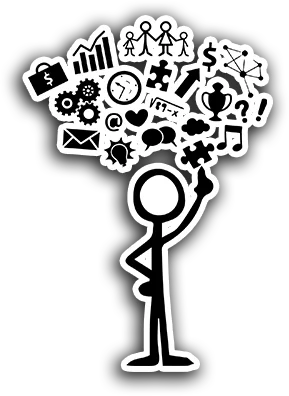


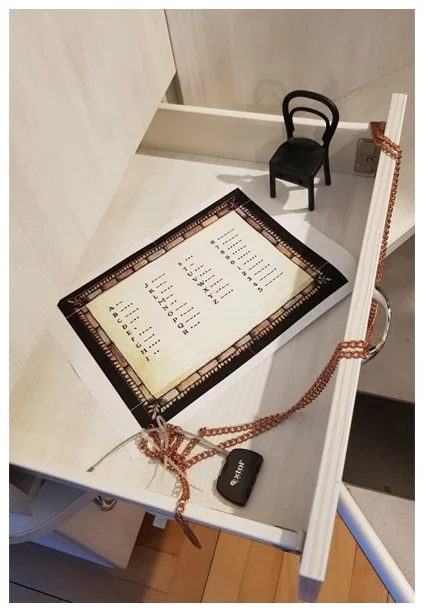

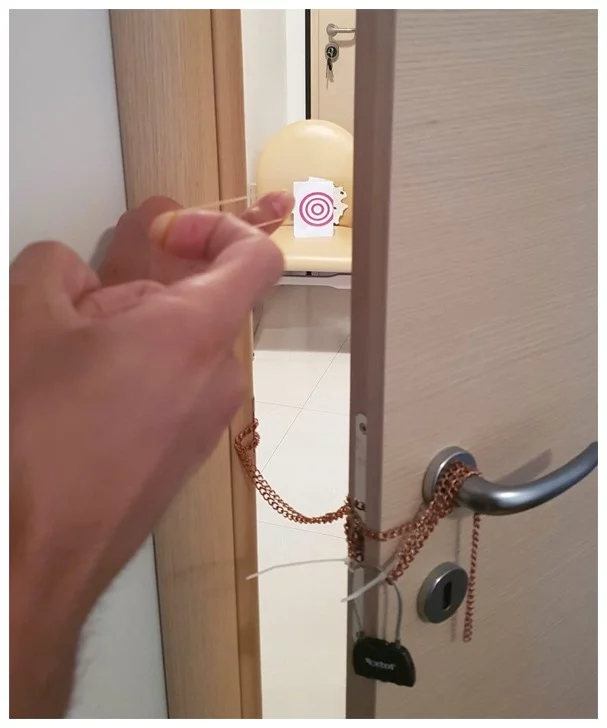
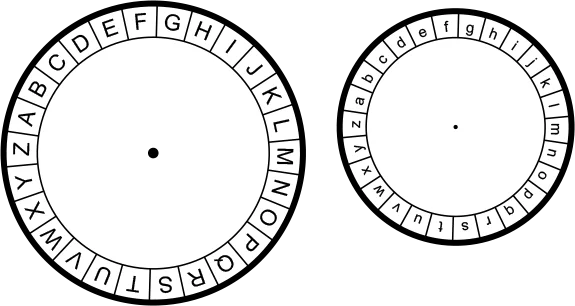
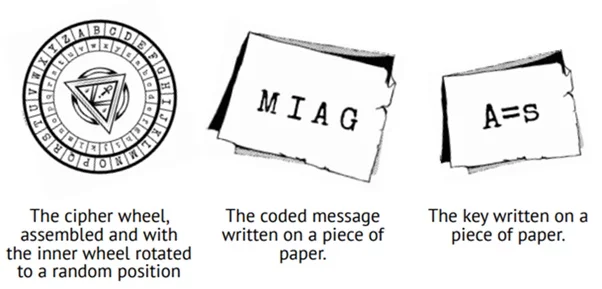







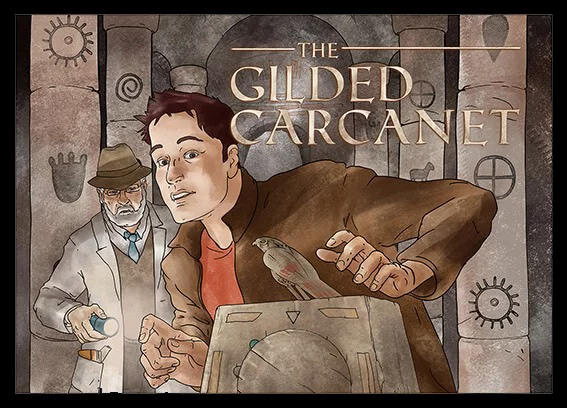



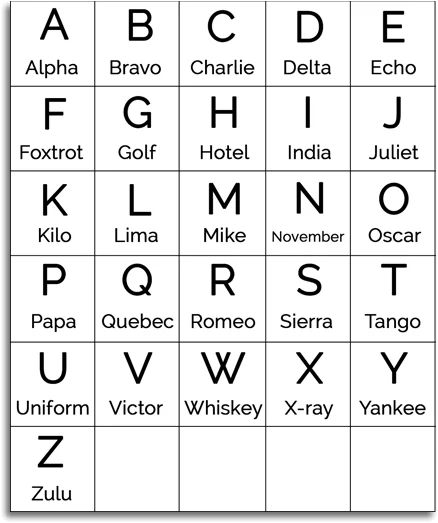
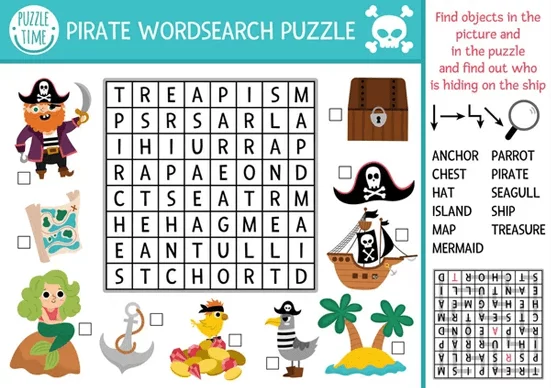
32 thoughts on “DIY Escape Room Puzzles”
LOVE your ideas here! I can’t wait to see how they turn out in mine. 🙂
So I’m Confused how the face recognition app works. You used app lock? How did you use face recognition on the app, and how did you get a four digit code to pop up?
Hi Mal,
Thanks for your question.
Let me explain to you in a bit more detail.
I’ve used 2 different apps for this challenge:
1. Writer Plus – used for writing notes.
2. AppLock Face/Voice Recognition – used for locking the apps on your phone.
So the code is written in the “Writer Plus” app, which is locked with the “AppLock”.
The players previously were given clues that they should open this app to find the 4 digit code. Also, they already have clue that Da Vinci is involved in this challenge as well.
So they need to click on the Writer Plus app, then scan the Da Vinci face and the code will appear 🙂
Hope it’s more clear now.
Feel free to write us if you have more questions.
Best regards,
Ivan
Thank you!
I’m confused. How did you get your phone to recognize a picture? Mine won’t do it.
I’m curious about this too… I can’t get it to recognize a picture
If I were designing an escape room for a class of 30 9-13 year olds, how many puzzles do you think would be the appropriate amount?
Hi,
It depends on the difficulty of the puzzles. I suggest you create a linear escape room with 8-10 medium-difficulty puzzles. Or you can buy a ready-to-play escape room and make a small setup in your classroom.
What app do you use for the Morse code flashlight that allows it to flash continuously?
Question on the face recognition puzzle using app lock. How did you get it to recognize a picture of a face? My phone won’t do it.
Hey there! I’d be happy to explain how the face recognition puzzle works.
To get the face recognition app to recognize a picture of a face (in this case, Da Vinci’s face), you’d need to use an app like Applock with face/voice recognition features. When setting up the app, you’ll have to use the picture of Da Vinci as the reference face for the app to recognize. This means you’ll have to “train” the app by scanning the picture a few times to ensure it can identify that specific face.
Once the setup is complete, players can use the app to scan Da Vinci’s face during the game, and a 4-digit code will appear when the face is successfully recognized. It’s important to note that the quality of face recognition may vary depending on the app you’re using and the phone’s capabilities. You might need to experiment with different apps or adjust the picture’s size and lighting conditions to ensure the face recognition works smoothly during the game.
I hope that clears up any confusion! If you have any more questions or need further clarification, please feel free to ask. Good luck with your puzzle, and have fun!
your ideas are great. thanks for sharing.
Hi! Fantastic ideas here! I am using the Gilded Carcanet as the basis for a big family birthday party, and plan to include some of these additional puzzles to personalize it a bit. I have a big family – any thoughts on how to expand the game for lots of people (other than multiple group runs)?
Thanks for your generosity! I have been collecting containers and boxes and locks for over a year and now will put it all together with your help for our Christmas party
That sounds amazing! 🎉 The Gilded Carcanet is already a great backbone, and layering in extra puzzles will make it feel super personal for your family. Since you’re running it for a big group, here are a few ways to scale things up without just splitting into separate sessions:
1. Parallel Puzzles
Instead of giving everyone the same clue, create branches. Hide multiple puzzles around the room that all funnel into the same lock/code. That way, small teams (siblings, cousins, parent-kid duos) can each tackle different challenges at the same time and still contribute to the group’s progress.
2. Team-Relay Style
Design a chain where Puzzle A unlocks Puzzle B, but Puzzle A has three sub-tasks inside it (maybe a cipher, a map, and a physical search). Each mini-team works on one sub-task, and together they unlock the next step. Everyone feels essential.
3. Duplicate “Stations”
For puzzles that are really fun to solve (like invisible ink or arranging strips), consider running two or three copies. That prevents a traffic jam where 10 people are hovering over one clue.
4. Big Reveal Moments
Have a few puzzles where everyone must come together—like a giant map where each team contributes one piece, or a final code that only works if you combine answers from all sub-puzzles. This makes the ending feel like a shared victory.
5. Roles & Personalization
Since it’s family, you can use the Custom Questions puzzle idea: make a different question for each person (NBA trivia for one cousin, astronomy for another, inside jokes for the grandparents). It guarantees that everyone gets a “hero moment.”
Quick rule of thumb: For every 4–5 players, add one extra puzzle path or duplicate an existing puzzle. This way, no one is left standing around, and the whole family stays engaged.
Buenos días, me encantan las ideas que has expuesto. Solo tengo una duda: el puzzle lógico sobre los viajes y los años, no lo acabo de resolver. ¿Me podrías dar la solución por favor? Muchísimas gracias por todo tu gran contenido. Un saludo y feliz Navidad 🙂
Some truly great ideas. I am a pensioner (ex-teacher) looking for some extra income and would like to develop some printable escape rooms for commercial purposes. Hope I can use some of your ideas?
Thanks
Andy
MUCHAS GRACIAS POR LAS IDEAS, LAS UTILIZARE EN MI CURSO DE LÓGICA Y ACERTIJOS, DE SEGURO A MIS ESTUDIANTES LES VAN A ENCANTAR.
MUCHAS GRACIAS SON UNOS GENIOS
ik vond het donders mooi kon t mooi gebroeken veur mien leesdosiertie atjoww groeties kyan veldman
echt goede puzzels maar ik ga ze niet gebruiken want het is niet wat ik nodig heb voor mijn horror escaperoom
ik heb een vraag ik moet donderdag een escaperoom doen maar ik kan geen goede puzzels verzinnen als jullie dat wel kunnen dan hoor ik jullie ideeen graag.
alvast bedankt
Bedankt voor je reactie. Kijk eens op onze website, wij hebben kant-en-klare spellen die je kunnen helpen bij jouw escape room feest. https://escaperoomgeeks.com/
hallo ik ben een escaperoom aan het maken door u hulp heb ik een grote stap gemaakt naar de escape
Bedankt! We zijn blij om te horen dat ons bericht je heeft geholpen aanzienlijke vooruitgang te boeken in je escape room. Ga zo door en veel puzzelplezier!
Hola!
enhorabuena por tu artículo, me ha dado muchas ideas para preparar mi escape room educativo.
A ver si me puedes ayudar. Quiero preparar una prueba en la que los partifcipantes tienen que ajustar la calidad de una imagen (tamaño, color, contraste…) de manera que cuando esté igual (o muy parecida) a la solución se valide la prueba (estoy preparando mi escape room mediante Genially), ¿se puede?
Muchas gracias!
¡Hola!
Me alegra saber que el artículo te inspiró para tu proyecto de escape room educativo, ¡qué manera tan divertida de aprender!
En cuanto a tu desafío de ajuste de imagen, sí, definitivamente es posible configurar algo así en Genially. Puedes crear una imagen interactiva donde los participantes ajusten varios parámetros como tamaño, color y contraste. Para validar el desafío cuando la imagen coincida con tu solución deseada, podrías necesitar incorporar alguna lógica condicional o herramientas externas que comparen el resultado final del participante con tus estándares preestablecidos. Puede requerir un poco de configuración creativa, ¡pero es una gran idea para un rompecabezas atractivo!
Una de las bellezas de crear juegos de escape room es que cualquier idea que se te ocurra puede convertirse en un rompecabezas. ¡Todo se trata de la creatividad en su máxima expresión!
¡Buena suerte con tu escape room! Parece que va a ser una experiencia fantástica para los participantes. Si necesitas más orientación detallada sobre cómo configurar esto en Genially, ¡avísame!
het is slecht
Labai ačiū už šias pasidalintas idėjas. Tikrai jomis pasinaudosiu ne tik darbe su 4-5 metų vaikais, bet ir su savo draugais.
Vielen Dank, tolle Ideen!!
Love the ideas! Might try and make one for my husband soon
This is an amazing resource- thank you!
What app do you recommend for the Morse code flashlight (for iPhone) and how did you get yours to flash the code on a loop?
Hey,
Ik ben 12 jaar en mag een Escape Room maken in een internaatsgang die al jaren verlaten staat. De naam ervan is horror maar ik heb niet zoveel inspiratie voor hoe ik eraan moet beginnen. Kan iemand hier een antwoord op geven?